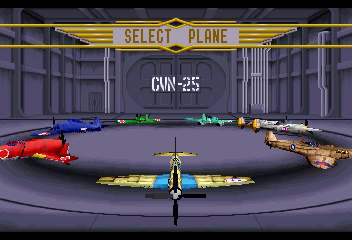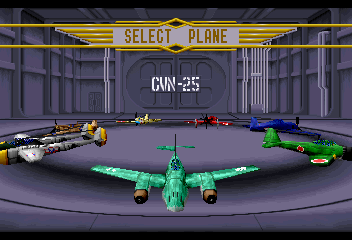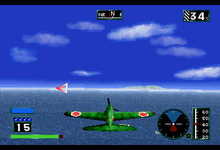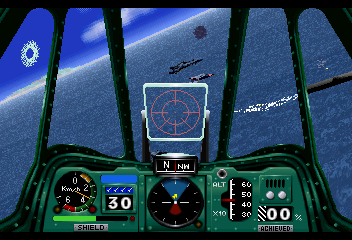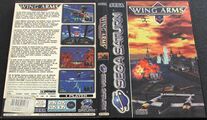Wing Arms
From Sega Retro
| ||||||||||||||||||||||||||||||||||||||||||||||||||
| Wing Arms | ||||||||||||||||||||||||||||||||||||||||||||||||||
|---|---|---|---|---|---|---|---|---|---|---|---|---|---|---|---|---|---|---|---|---|---|---|---|---|---|---|---|---|---|---|---|---|---|---|---|---|---|---|---|---|---|---|---|---|---|---|---|---|---|---|
| System(s): Sega Saturn | ||||||||||||||||||||||||||||||||||||||||||||||||||
| Publisher: Sega | ||||||||||||||||||||||||||||||||||||||||||||||||||
| Developer: Bell Corporation, Jitensha, Sega CS | ||||||||||||||||||||||||||||||||||||||||||||||||||
| Supporting companies: T's Music (audio) | ||||||||||||||||||||||||||||||||||||||||||||||||||
| Distributor: Ecofilmes (PT), Sega-Ozisoft (AU), Tec Toy (BR) | ||||||||||||||||||||||||||||||||||||||||||||||||||
| Sound driver: SCSP/CD-DA (14 tracks) | ||||||||||||||||||||||||||||||||||||||||||||||||||
| Peripherals supported: Mission Stick | ||||||||||||||||||||||||||||||||||||||||||||||||||
| Genre: 3D Shooting[1], Simulation[2] | ||||||||||||||||||||||||||||||||||||||||||||||||||
| Number of players: 1 | ||||||||||||||||||||||||||||||||||||||||||||||||||
|
Wing Arms or Wing Arms: Kareinaru Gekitsuiou (ウイングアームズ ~華麗なる撃墜王~) in Japan, is a flight simulator for the Sega Saturn.
Early in its development, the game was known as Mystery Plane.[8]
Contents
Story
Some time after the summer of 1945, a group of arms manufacturers throughout the Axis and Allied countries known as Avalon is revealed to have played a large part in instigating combat in World War II, which resulted in the boom of vehicle and weapons production. As soon as the war ended, Avalon's riches started to decrease, resulting in their decision to keep the war going by using captured Axis and Allied planes against the military facilities of various nations.
A squadron of unified Allied and Axis planes are assembled aboard the USS Endeavor to deal with the newest products of Avalon and to crush the company for good.
Gameplay
The game is an arcade-style flight simulator. Physics are simplified for the sake of playability; the planes do not stall when traveling under stalling speeds and planes do not crash against water and other surfaces when descending from high altitudes. Players choose one of seven different Allied and Axis fighter planes and play through six seek-and-destroy missions against a large, unified squadron and naval force. Players are given a radio briefing from the aircraft carrier's admiral at the start of each mission outlining the objective, usually destroying a certain number of aerial targets or destroying a particular base, ship, or fortification.
Arrows appear during gameplay to point the player towards the current target. The HUD also has a compass that shows the plane's current heading and a radar that shows nearby targets. A light near the radar lights up if an enemy is on the plane's tail. When an enemy is firing at the player's plane from behind, the camera jumps to a third-person chase view of the enemy.
Using the standard control pad, the D-Pad steers the plane. The vertical controls are inverted, so ![]() dives and
dives and ![]() climbs. The plane rolls left with
climbs. The plane rolls left with ![]() and rolls right with
and rolls right with ![]() . The plane levels itself after it is steered. It decreases its airspeed with
. The plane levels itself after it is steered. It decreases its airspeed with ![]() and increases its airspeed with
and increases its airspeed with ![]() . The plane's HUD has a speedometer that shows the speed of the plane and an altimeter showing its altitude. Planes are armed with a machine gun, which is fired with
. The plane's HUD has a speedometer that shows the speed of the plane and an altimeter showing its altitude. Planes are armed with a machine gun, which is fired with ![]() . The machine gun has unlimited ammunition, but it overheats if it is fired too much and must cooled off to use again. Planes are also equipped with missiles, which are fired with
. The machine gun has unlimited ammunition, but it overheats if it is fired too much and must cooled off to use again. Planes are also equipped with missiles, which are fired with ![]() . Missiles are limited. The player can discharge up to four missiles in quick succession. The player can change the view with
. Missiles are limited. The player can discharge up to four missiles in quick succession. The player can change the view with ![]() or view a map with
or view a map with ![]() .
.
The game is compatible with the Mission Stick for analogue control. Since the game does not use the throttle wheel, the 3D Control Pad in analogue mode is also fully compatible. When using an analogue controller, the controls change. The plane is steered with the flight stick or the analogue stick. The plane rolls left with ![]() and rolls right with
and rolls right with ![]() . It decreases its airspeed with
. It decreases its airspeed with ![]() and increases its airspeed with
and increases its airspeed with ![]() . The machine gun is fired with
. The machine gun is fired with ![]() (which is the trigger on the Mission Stick) and missiles are fired with
(which is the trigger on the Mission Stick) and missiles are fired with ![]() . The player can change the view with
. The player can change the view with ![]() or view a map with
or view a map with ![]() .
.
The game optionally offers "expert" control modes where the plane's pitch, yaw, and roll are controlled separately.
The plane has a shield that is reduced by enemy fire. The shield level is shown in the HUD. When it is depleted, the plane is shot down, but the mission can be continued from the beginning if the player has credits remaining.
After every mission, players are ranked by the types and total number of targets destroyed (land, air, and sea) and the time taken to clear the mission. Players can work their way up in rank as they grow their score: 2nd Lieutenant, 1st Lieutenant, Captain, Major, Lieutenant Colonel, and Colonel. The plane's shield is partially restored at the beginning of each mission and missiles are restocked.
Planes
Each plane has different speed, armor, and handling characteristics.
Views
The cockpit view is the only view with a targeting reticle.
Missions
| Destroy All Air Targets | |
|---|---|
| Destroy the Supply Base | |
| Destroy the Mountain Base | |
| Defend the Endeavor | |
| Down the Superbomber | |
| The Final Battle | |
Versions
Localised names
| Language | Localised Name | English Translation |
|---|---|---|
| English | Wing Arms | Wing Arms |
| English (US) | Wing Arms | Wing Arms |
| Japanese | ウイングアームズ ~華麗なる撃墜王~ | Wing Arms: Kareinaru Gekitsuiou |
Production credits
- Exective Producer: Mamoru Shigeta, Jun Yakahi
- Producer: Hiroshi Asou
- Director: Koji Iwashita
- Planner: Satoru Aoyama
- Game Designer: Joe Gillian
- Programmer: Nobuyuki Nishiyama, Futaro Yamamoto, Tadashi Ogura, Takashi Itou, Kiyoshi Fukaya, Shuichi Sugimoto
- Graphic designer: Satoru Aoyama, Kouji Watanabe, Syohei Kohara, Sayoko Kingodzi, [Jitensha Co.,Ltd.]
- 3D System Engineer (3D Realizer): Kazunori Hasegawa, Yasutaka Mori
- Sound & Music: K.Sakurai, E.Yamamoto, Shinitiro Sato ([T'S Music]), Takashi Tsumaki ([T'S Music])
- Voice: Takao Ishii, Ikkan Arai, Emiko Kuriyama
- Special thanks to: Tatsuya Kozaki (Sound Collaborator), Takehisa Kobayashi (Aerodynamics Adviser), M&M Hobby (Model Collaborator)
- Sega Sound Produced by: InVision Interactive
- Produced by: Bell Corporation
- Presented by: Sega Enterprises,Ltd. 1995
- Producer: Steven Apour
- Associate Producer: Seth Gerson
- Lead Tester: Christopher Lucich
- Assistant Leads: Joseph M. Damon, Mark Lerma, Geoff Jones
- High Flying Testers: Amy Albertson, Ron Allen, Alex Barreiro, Sako Bezdjian, Martin Broenkow, Anthony De Santis, Don Carmichael, Chris Cates, Kenneth Chan, Rolef Conlan, Janine Cook, Annette Dancel, Marc Dawson, Louis Dribbin, Sam Ford, Zac Fuller, Jeffrey L. Loney, Dylan Manger, Marcus Montgomery, Jose Ochoa, Alphonse Pedroso, Mike Puccini, Eddie Ramirez, Aaron Reif, Timothy Spengler, Roger Somerville, Fernando Valderrama, Gregg Vogt
- Marketing: Lisa Wilson, Lori Von Rueden, Clint Dyer
- Manual: John McClain
- Director: Takao Miyoshi[11]
Magazine articles
- Main article: Wing Arms/Magazine articles.
Promotional material
also published in:
- (RU) #4: "May/Iyun 1996" (1996-xx-xx)[12]
Physical scans
| Sega Retro Average | ||||||||||||||||||||||||||||||||||||||||||||||||||||||||||||||||||||||||||||||||||||||||||||||||||||||||||||||||||||||||||||||||||||||||||||||||||||||||||||||||||||||||||||||
|---|---|---|---|---|---|---|---|---|---|---|---|---|---|---|---|---|---|---|---|---|---|---|---|---|---|---|---|---|---|---|---|---|---|---|---|---|---|---|---|---|---|---|---|---|---|---|---|---|---|---|---|---|---|---|---|---|---|---|---|---|---|---|---|---|---|---|---|---|---|---|---|---|---|---|---|---|---|---|---|---|---|---|---|---|---|---|---|---|---|---|---|---|---|---|---|---|---|---|---|---|---|---|---|---|---|---|---|---|---|---|---|---|---|---|---|---|---|---|---|---|---|---|---|---|---|---|---|---|---|---|---|---|---|---|---|---|---|---|---|---|---|---|---|---|---|---|---|---|---|---|---|---|---|---|---|---|---|---|---|---|---|---|---|---|---|---|---|---|---|---|---|---|---|---|
|
| 69 | |
|---|---|
| Based on 34 reviews | |
| Saturn, BR |
|---|
|
Technical information
- Main article: Wing Arms/Technical information.
External links
References
- ↑ File:WingArms Saturn JP Box Back.jpg
- ↑ 2.0 2.1 https://sega.jp/history/hard/segasaturn/software.html (Wayback Machine: 2020-03-30 22:53)
- ↑ https://groups.google.com/g/rec.games.video.sega/c/IRwQkF2KG2s/m/_e5t78b6-f8J
- ↑ 4.0 4.1 Game Players, "Vol. 9 No. 2 February 1996" (US; 1996-0x-xx), page 55
- ↑ Game Players, "Vol. 9 No. 2 February 1996" (US; 1996-0x-xx), page 3
- ↑ Sega Saturn Magazine, "February 1996" (UK; 1996-01-24), page 10
- ↑ 7.0 7.1 Mean Machines Sega, "December 1995" (UK; 1995-10-30), page 65
- ↑ Computer & Video Games, "March 1995" (UK; 1995-02-15), page 34
- ↑ File:Wing Arms Saturn credits.pdf
- ↑ File:Wingarms sat us manual.pdf, page 14
- ↑ http://sega.jp/segavoice/vol49/ (Wayback Machine: 2008-10-07 20:54)
- ↑ Strana Igr, "May/Iyun 1996" (RU; 1996-xx-xx), page 2
- ↑ 576 KByte, "Április 1996" (HU; 1996-xx-xx), page 20
- ↑ CD Consoles, "Janvier 1996" (FR; 199x-xx-xx), page 94
- ↑ Consoles +, "Novembre 1995" (FR; 1995-1x-xx), page 154
- ↑ Consoles +, "Avril 1996" (FR; 1996-0x-xx), page 144
- ↑ Edge, "December 1995" (UK; 1995-10-26), page 68
- ↑ Electronic Entertainment, "December 1995" (US; 1995-1x-xx), page 174
- ↑ Electronic Gaming Monthly, "February 1996" (US; 1996-xx-xx), page 32
- ↑ Fun Generation, "06/95" (DE; 1995-0x-xx), page 81
- ↑ Fusion, "Volume 2, Number 7: February 1996" (US; 1996-0x-xx), page 66
- ↑ GamePro, "March 1996" (US; 1996-xx-xx), page 60
- ↑ Gamers, "Dezember 1995" (DE; 1995-11-08), page 56
- ↑ Game Informer, "February 1996" (US; 1996-0x-xx), page 46
- ↑ Hobby Consolas, "Febrero 1996" (ES; 1996-xx-xx), page 84
- ↑ MAN!AC, "12/95" (DE; 1995-11-08), page 76
- ↑ Maximum, "February 1996" (UK; 1996-xx-xx), page 140
- ↑ Mega Fun, "11/95" (DE; 1995-10-18), page 81
- ↑ Magazina Igrushek, "9/1996" (RU; 1996-xx-xx), page 97
- ↑ Mean Machines Sega, "April 1996" (UK; 1996-0x-xx), page 90
- ↑ Player One, "Février 1996" (FR; 1996-0x-xx), page 102
- ↑ Saturn Fan, "1995 December" (JP; 1995-11-08), page 60
- ↑ Saturn+, "Christmas 1995" (UK; 1995-12-14), page 35
- ↑ Sega Magazin, "Januar 1996" (DE; 1995-12-13), page 70
- ↑ Sega Power, "December 1995" (UK; 1995-10-19), page 62
- ↑ Sega Pro, "December 1995" (UK; 1995-11-02), page 46
- ↑ Sega Saturn Magazine, "February 1996" (UK; 1996-01-24), page 68
- ↑ Sega Saturn Magazine, "October 1995" (JP; 1995-09-08), page 176
- ↑ Sega Saturn Magazine, "Readers rating final data" (JP; 2000-03), page 15
- ↑ Total Saturn, "Volume One Issue Four" (UK; 1996-12-29), page 66
- ↑ Ultimate Future Games, "December 1995" (UK; 1995-11-01), page 76
- ↑ Ultimate Gamer, "January 1996" (US; 199x-xx-xx), page 70
- ↑ Video Games, "11/95" (DE; 1995-10-25), page 90
- ↑ VideoGames, "January 1996" (US; 1995-12-21), page 81
| Wing Arms | |
|---|---|
|
Main page | Comparisons | Magazine articles | Video coverage | Reception | Technical information
Demos: Wing Arms: Kareinaru Gekitsuiou Hibaihin Mihonban (1995) | |
- Mission Stick-compatible games
- 1 player games
- JP Saturn games
- All JP games
- US Saturn games
- All US games
- EU Saturn games
- All EU games
- DE Saturn games
- All DE games
- PT Saturn games
- All PT games
- UK Saturn games
- All UK games
- PL Saturn games
- All PL games
- AU Saturn games
- All AU games
- BR Saturn games
- All BR games
- Saturn games
- 1995 Saturn games
- All 1995 games
- Saturn simulation games
- All simulation games
- Saturn games with Cinepak video
- Saturn games using the Sega Sound Library
- All games
- Credits without reference
- Old-style rating (digitiser)
- Update ratings template
- 0 old ratings
- Wing Arms






